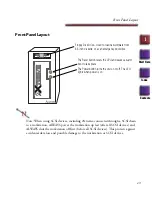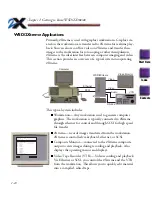
Image Transfer Considerations
1-13
1
Start Here
Index
Contents
n
n
n
n
Interlaced Scanning— A single, complete frame of video
consists of many horizontal lines of video information (525
lines for NTSC; 625 lines for PAL). Each frame consists of two
“fields” of lines, which, when interlaced by the television
screen’s momentary retention of information, “paint” a
complete frame. The field rate then, is twice the frame rate (60
fields per second for NTSC, 50 fields per second for PAL).
To understand what a field is, imagine that a video image is
painted from top to bottom in horizontal strokes using a narrow
brush. On the first pass down the canvas, the brush lays in odd
lines only (1, 3, 5,... through 525 or 625). When it reaches the
bottom of the canvas, one video field (Field 1) is complete. The
brush then snaps back to the upper left corner and makes a sec-
ond pass down the canvas, laying in only the even lines (2, 4,
6,.... through 524 or 624). When it reaches the bottom of the
canvas, the second field (Field 2) is complete. The information
contained in the two fields together completes one frame of
video.
Television uses interlaced scanning for image reproduction while
most computer monitors use non-interlaced scanning. When
you transfer images from your computer to 2Xtreme, they may
“flicker” due to interlaced scanning.
Field 1
Field 2
Complete Frame
+
=














